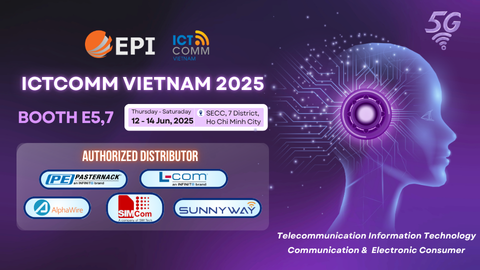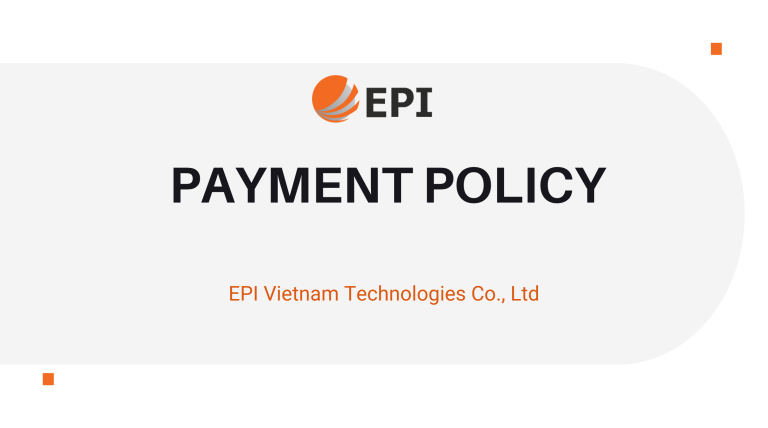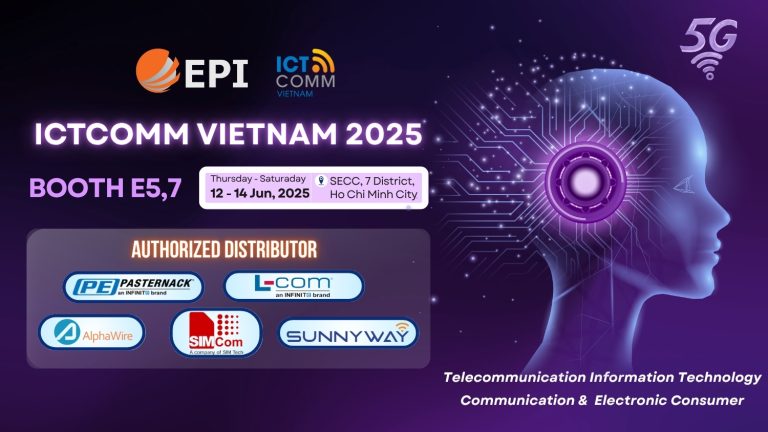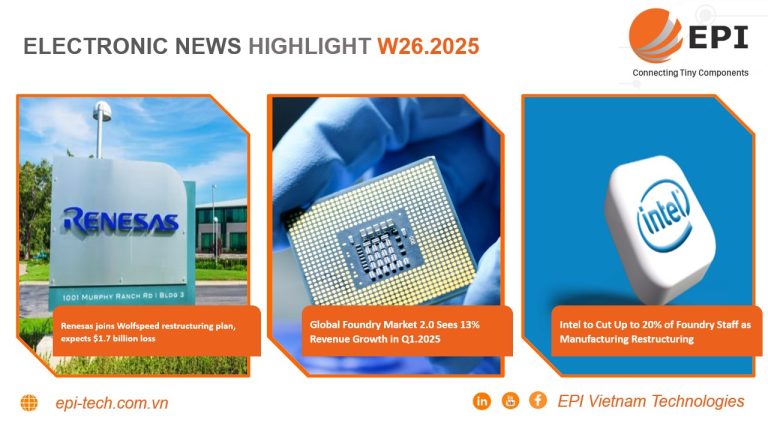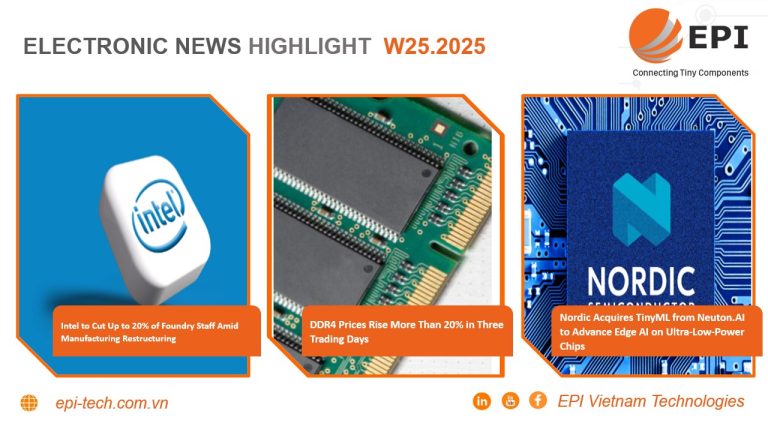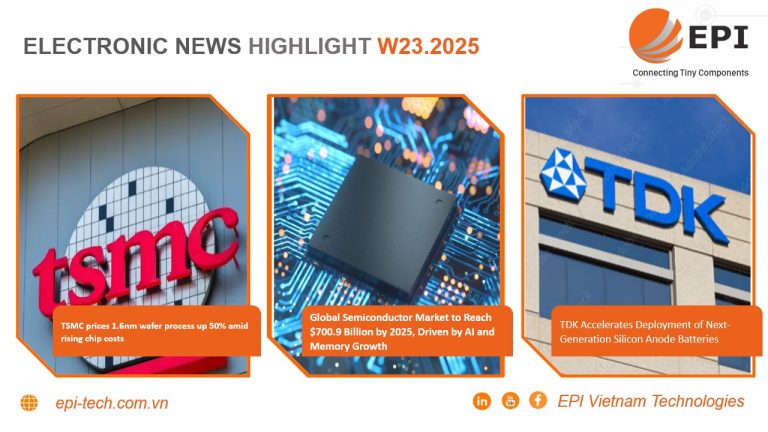ĐIỂM TIN THỊ TRƯỜNG ĐIỆN TỬ W18.2025
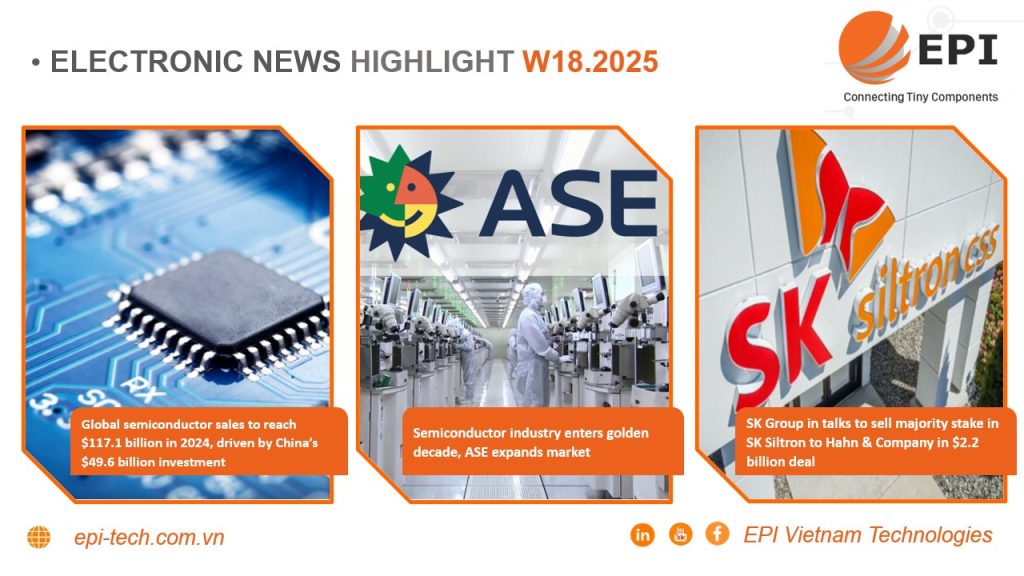
1. Global semiconductor sales to reach $117.1 billion in 2024, driven by China’s $49.6 billion investment
Global semiconductor sales are expected to grow 10% in 2024 to $117.1 billion, up from $106.3 billion in 2023, according to a new report from SEMI.
This growth is driven by increased investment in advanced logic, high-bandwidth memory (HBM), and advanced packaging capabilities, with China leading the way. China’s equipment spending is expected to increase 35% year-on-year to $49.6 billion, securing its position as the world’s largest market. The increase reflects aggressive capacity expansion and government-backed efforts to boost domestic chip production.
Sales of wafer fabrication equipment are expected to grow 9% in 2024, while other front-end segments are expected to grow 5%. The back-end segment is also recovering from two years of decline, with sales of assembly and packaging equipment soaring 25% and test equipment rising 20%, supported by increased AI and HBM demand.
South Korea is forecast to remain the second-largest market with $20.5 billion in spending, up 3%, as demand for memory recovers. Taiwan’s equipment spending is expected to decline 16% to $16.6 billion amid slower new capacity buildouts. North American investment is expected to increase 14% to $13.7 billion, reflecting a continued focus on domestic manufacturing and advanced technology nodes.
2. Semiconductor industry enters golden decade, ASE expands market
The global semiconductor industry is about to enter the “Golden Decade”, with industry experts predicting that the market will exceed $1 trillion within the next ten years. ASE Group recognizes this growth potential and is formulating strategies to capitalize on the upcoming opportunities.
ASE Group CEO Tien Wu shared his insights that AI technology is driving a new wave of innovation in the semiconductor industry. As AI applications expand, the demand for semiconductors is expected to increase sharply, with this trend expected to continue for at least the next decade, driving significant market growth.
In this highly competitive global market, ASE Group Vice President and Chief Procurement Officer Andrew Tang emphasized the importance of sustainable development in the semiconductor industry. To ensure long-term competitiveness, ASE will work closely with global supply chain partners in four key areas: technological innovation, supply chain resilience, ESG-focused projects, and expanding strategic partnerships.
At the 2024 Best Supplier Awards, ASE recognized the valuable contributions of global partners. In 2025, ASE introduced more stringent selection criteria, incorporating not only quality, cost, delivery, and technology, but also ESG performance. A total of 17 companies received the Best Supplier Award. ASE also collaborated with 19 equipment suppliers to promote energy-saving designs, with the goal of reducing energy consumption by 20% by 2030, contributing to the green transformation of the industry.
SEMI Marketing Director and SEMI Taiwan President Charles Kao praised ASE as a leader in semiconductor packaging and testing, driving the industry towards advanced technologies and sustainable development.
Xem thêm: Semiconductor industry enters golden decade, ASE expands market
3. SK Group in talks to sell majority stake in SK Siltron to Hahn & Company in $2.2 billion deal
SK Group is in advanced talks to sell a 70.6% stake in SK Siltron, South Korea’s only semiconductor silicon wafer maker, to local private equity firm Hahn & Company, in a deal estimated to be worth KRW3 trillion ($2.2 billion).
The sales include 51% held directly by SK Group and 19.6% held through a total return swap (TRS). If completed, the deal would mark Hahn & Company’s tenth acquisition from SK Group’s portfolio.
SK Siltron plays a key role in the semiconductor supply chain, ranking third globally in wafer production after Japan’s Shin-Etsu and Sumco. Since SK acquired the company from LG in 2017, SK Siltron’s revenue has doubled to KRW 2.13 trillion by 2024, with EBITDA expected to reach KRW 640 billion.
The transaction is expected to significantly improve SK Group’s balance sheet, reducing its debt ratio from 86% to around 50%. Based on the industry’s typical EBITDA multiple, SK Siltron is valued at around KRW 5 trillion. After paying off debt and taxes related to TRS, SK Group could earn at least KRW 2 trillion in net income.
Hahn & Company has a history of acquiring SK assets, including the recent $2.7 billion acquisition of SK Specialty. Given SK Siltron’s strategic importance to the South Korean semiconductor industry, a foreign acquisition is considered unlikely due to potential government scrutiny.
Xem thêm: SK Group in talks to sell majority stake in SK Siltron to Hahn & Company in $2.2 billion deal
#ASEAN #AsiaPacific #FarEast #distributor #Global #electronicdistributor #PCBA



 English
English  Tiếng Việt
Tiếng Việt 




